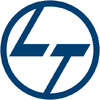Filter interviews by
J. Kumar Infraprojects Safety Manager Interview Questions and Answers
J. Kumar Infraprojects Safety Manager Interview Experiences
1 interview found
I applied via Recruitment Consulltant and was interviewed in Apr 2022. There were 3 interview rounds.

(1 Question)
- Q1. Introduction, Experience educational Background Technical qualification skiils etc.
(2 Questions)
- Q1. Introduction, Experience, educational Background, Technical Skills and Salary etc.
- Q2. Work life and communication about sa safety management, behaviourioal approche etc.
Interview Preparation Tips
Top trending discussions






Interview questions from similar companies

Safety Officer Interview Questions & Answers
Larsen & Toubro Limitedposted on 12 Jun 2020
Interview Questionnaire
2 Questions
- Q1. About work experience. i.e HIRA,SOP,
- Q2. Basis knowledge.

Interview Questionnaire
3 Questions
- Q1. What's Safety policy ?
- Ans.
Safety policy is a set of guidelines and procedures designed to ensure the safety of employees and prevent accidents in the workplace.
Safety policy outlines the responsibilities of employees and management in maintaining a safe work environment.
It includes procedures for identifying and reporting hazards, conducting safety training, and responding to emergencies.
Examples of safety policies include wearing personal prot...
- Q2. What's Height work ?
- Q3. What's Emergency plan ?
- Ans.
Emergency plan is a set of procedures and guidelines to be followed in case of an emergency or disaster.
It outlines the roles and responsibilities of individuals and teams during an emergency
It includes evacuation procedures, communication protocols, and emergency contacts
It should be regularly reviewed and updated to ensure its effectiveness
Examples include fire evacuation plans, severe weather plans, and active shoot

I applied via Referral and was interviewed before Feb 2021. There was 1 interview round.
(3 Questions)
- Q1. Tell me about yourself.
- Q2. What are your salary expectations?
- Q3. What is your family background?
Interview Preparation Tips

I applied via Naukri.com and was interviewed in Dec 2017. There were 4 interview rounds.
Interview Questionnaire
3 Questions
- Q1. Tell me about your self
- Ans.
Experienced safety officer with a background in industrial safety protocols and emergency response procedures.
Over 5 years of experience in implementing safety measures in industrial settings
Proficient in conducting safety audits and inspections to ensure compliance with regulations
Skilled in developing and implementing safety training programs for employees
Strong knowledge of emergency response protocols and procedure...
- Q2. Duties of safety Officer
- Ans.
Safety Officers are responsible for ensuring the safety of employees in the workplace by implementing safety protocols and procedures.
Develop and implement safety policies and procedures
Conduct regular safety inspections and audits
Investigate accidents and incidents to determine root causes
Provide safety training to employees
Ensure compliance with safety regulations and standards
Maintain safety records and reports
- Q3. Working improvement
Interview Preparation Tips
Experience: Written test
General Tips: Expended
Skills: Self-Awareness
Duration: <1 week

Safety Officer Interview Questions & Answers
Kalpataru Projects Internationalposted on 19 Apr 2022
I applied via LinkedIn and was interviewed before Apr 2021. There were 2 interview rounds.

(3 Questions)
- Q1. Tell me about yourself.
- Ans.
I am a dedicated Safety Officer with a strong background in ensuring workplace safety and implementing safety protocols.
Experienced in conducting safety inspections and risk assessments.
Proficient in developing and implementing safety training programs.
Skilled in investigating accidents and incidents to identify root causes and prevent future occurrences.
Knowledgeable in maintaining safety records and ensuring complian...
- Q2. Nothing to said anything
- Q3. Nothing to said anything...
Interview Preparation Tips
- EHS Management

I applied via Naukri.com and was interviewed before Aug 2020. There were 3 interview rounds.
Interview Questionnaire
2 Questions
- Q1. Intro, safety officer roles and responsibilities
- Q2. Co gas limit
- Ans.
The CO gas limit is the maximum allowable concentration of carbon monoxide in the air.
The CO gas limit is set by regulatory agencies to protect human health and safety.
The limit varies depending on the location and type of facility.
For example, the Occupational Safety and Health Administration (OSHA) has set a permissible exposure limit (PEL) of 50 parts per million (ppm) for an 8-hour workday.
In residential homes, the...
Interview Preparation Tips

I applied via Walk-in and was interviewed in May 2024. There was 1 interview round.
(5 Questions)
- Q1. What is responsibility safety officer
- Ans.
Safety officers are responsible for ensuring the safety of employees, visitors, and the workplace environment.
Developing and implementing safety policies and procedures
Conducting regular safety inspections and audits
Providing safety training to employees
Investigating accidents and incidents to determine causes and prevent future occurrences
Ensuring compliance with safety regulations and standards
- Q2. How many types of fire extinguisher
- Ans.
There are five main types of fire extinguishers: water, foam, dry powder, CO2, and wet chemical.
Water fire extinguishers are suitable for Class A fires involving solid materials like wood or paper.
Foam fire extinguishers are effective for Class A and B fires involving flammable liquids like petrol or oil.
Dry powder fire extinguishers are suitable for Class A, B, and C fires involving flammable gases.
CO2 fire extinguish...
- Q3. How many types of permit
- Ans.
There are various types of permits required for different activities in a workplace.
Work Permit - for tasks like hot work, confined space entry, etc.
Electrical Permit - for electrical work like installations, repairs, etc.
Excavation Permit - for digging or excavation work.
Permit to Work at Height - for tasks performed at elevated locations.
Permit to Work with Hazardous Materials - for handling dangerous substances.
Perm...
- Q4. How many types hazard control methods
- Ans.
There are three main types of hazard control methods: engineering controls, administrative controls, and personal protective equipment (PPE).
Engineering controls involve physically changing the workplace to reduce or eliminate hazards, such as installing machine guards or ventilation systems.
Administrative controls focus on changing work practices or policies to minimize exposure to hazards, such as implementing safety...
- Q5. Why important PPE work at site work place
Interview Preparation Tips

(1 Question)
- Q1. Tell me about yourself.

Safety Officer Interview Questions & Answers
Nagarjuna Construction Companyposted on 3 Sep 2023
I applied via Company Website and was interviewed in Aug 2023. There were 2 interview rounds.

(4 Questions)
- Q1. Tool box talk Hse policy Fire HIRA Permit to work Work at height Scoffolding
- Q2. PPE Hierarchy of control
- Ans.
PPE hierarchy of control involves prioritizing control measures to protect workers from hazards.
Elimination - Remove the hazard completely (e.g. using automated equipment instead of manual handling)
Substitution - Replace the hazard with something less hazardous (e.g. using non-toxic chemicals instead of toxic ones)
Engineering controls - Isolate workers from the hazard (e.g. installing ventilation systems)
Administrative...
- Q3. What is hazars ?
- Ans.
Hazards are potential sources of harm or danger that can cause injury, illness, or damage to property.
Hazards can be classified into different categories such as physical, chemical, biological, ergonomic, and psychosocial.
Examples of hazards include slippery floors, toxic chemicals, infectious diseases, repetitive motion tasks, and workplace stress.
Identifying and assessing hazards is crucial in developing effective sa...
- Q4. Hse plan Role and responsibilities
- Ans.
HSE plan outlines safety measures and procedures to ensure a safe work environment. Responsibilities include implementation, monitoring, and enforcement.
Developing and implementing HSE plans in accordance with regulations and company policies
Conducting risk assessments and identifying potential hazards
Training employees on safety procedures and protocols
Monitoring and evaluating safety performance
Enforcing safety regul...
J. Kumar Infraprojects Interview FAQs
Tell us how to improve this page.
J. Kumar Infraprojects Interviews By Designations
- J. Kumar Infraprojects Civil Engineer Interview Questions
- J. Kumar Infraprojects Civil Foreman Interview Questions
- J. Kumar Infraprojects Senior Engineer Interview Questions
- J. Kumar Infraprojects Safety Officer Interview Questions
- J. Kumar Infraprojects Safety Supervisor Interview Questions
- J. Kumar Infraprojects Asst Store Interview Questions
- J. Kumar Infraprojects Quality Engineer Interview Questions
- J. Kumar Infraprojects QA QC Engineer Interview Questions
- Show more
Interview Questions for Popular Designations
- Safety Engineer Interview Questions
- Senior Safety Officer Interview Questions
- Senior Safety Engineer Interview Questions
- Safety Officer Interview Questions
- Fire & Safety Officer Interview Questions
- Safety Supervisor Interview Questions
- Fire & Safety Supervisor Interview Questions
- Senior Safety Supervisor Interview Questions
- Show more
Interview Questions from Similar Companies
J. Kumar Infraprojects Safety Manager Reviews and Ratings
based on 2 reviews
Rating in categories
|
Junior Engineer
176
salaries
| ₹2 L/yr - ₹4.8 L/yr |
|
Senior Engineer
168
salaries
| ₹4.4 L/yr - ₹11.6 L/yr |
|
Civil Engineer
168
salaries
| ₹2.2 L/yr - ₹9 L/yr |
|
Civil Site Engineer
149
salaries
| ₹2 L/yr - ₹6.4 L/yr |
|
Junior Engineer Civil
111
salaries
| ₹2 L/yr - ₹5 L/yr |

Larsen & Toubro Limited

Tata Projects

L&T Construction

Kalpataru Projects International
- Home >
- Interviews >
- J. Kumar Infraprojects Interview Questions >
- J. Kumar Infraprojects Safety Manager Interview Questions










